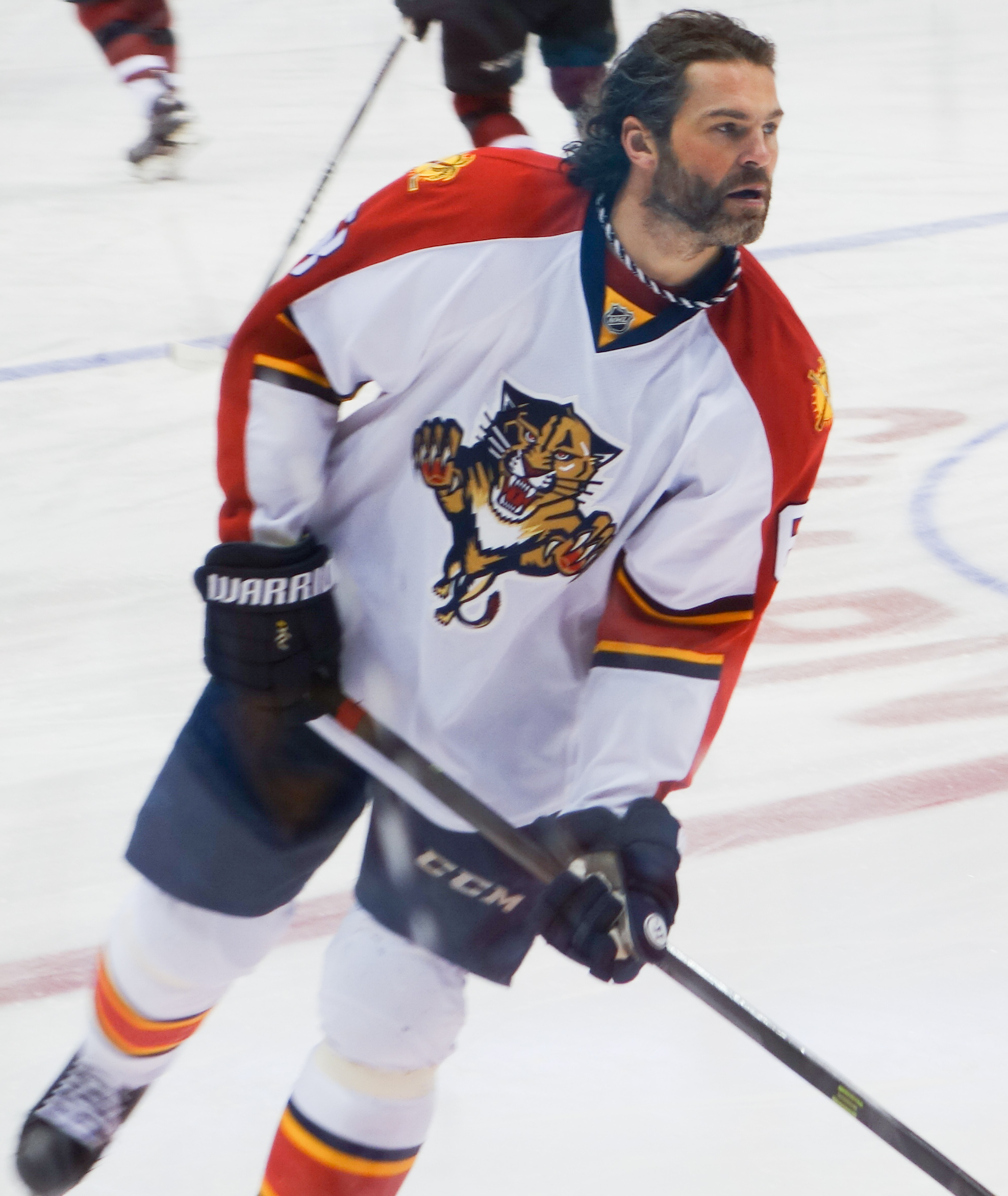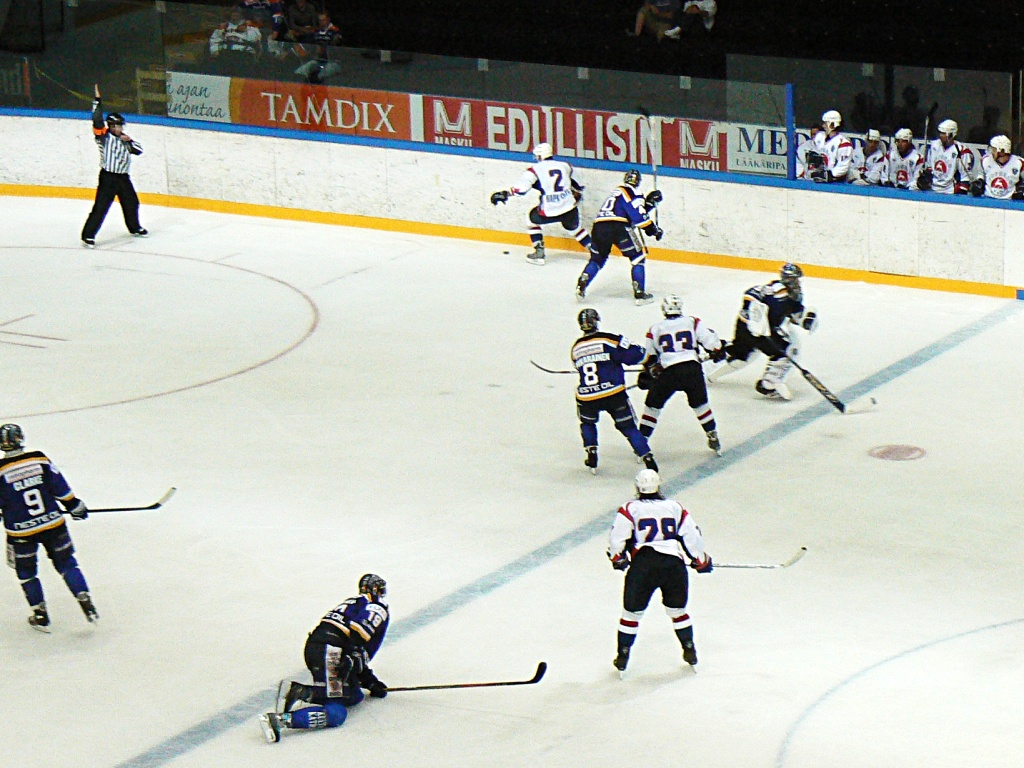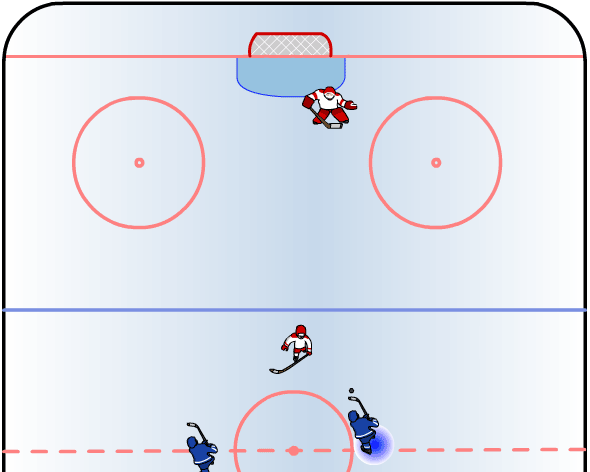|
Steve Wojciechowski (ice Hockey)
Stephen Wochy (''né'' Wojciechowski; December 25, 1922) is a Canadian former professional ice hockey player, who played 54 games for the Detroit Red Wings in the National Hockey League between 1944 and 1946. The rest of his career, which lasted from 1940 to 1955, was spent in the minor leagues. He was born in Fort William, Ontario but has called Sault Ste Marie, Ontario his home since 1954. After Jim Conacher's death in April 2020, he became the oldest living former NHL player. He is the second NHL player to become a centenarian, Al Suomi being the first known. Prior to playing in the NHL, Wojciechowski was a member of the Port Arthur Bearcats in 1942 appearing in the 1942 Allan Cup. Wojciechowski played 10 seasons in the American Hockey League after leaving the NHL, with the Indianapolis Capitals, Philadelphia Rockets, Cleveland Barons and Buffalo Bisons. Wojciechowski was named a first team AHL All-star in 1952 Events January–February * January 26 – Black Sat ... [...More Info...] [...Related Items...] OR: [Wikipedia] [Google] [Baidu] |
Winger (ice Hockey)
Winger, in the game of ice hockey, is a forward position of a player whose primary zone of play is along the outer playing areas. They typically flank the centre forward. Originally the name was given to forward players who went up and down the sides of the rink. Wingers generally have the least defensive responsibilities out of any position on the ice, however they are still tasked with defensive duties such as forechecking duties or covering the point in the defensive zone. Nowadays, there are different types of wingers in the game — out-and-out goal scorers, checkers who disrupt the opponents, and forwards who work along the boards and in the corners. Often a winger's precise role on a line depends upon what type of role the other winger plays; usually lines will have one more goal-scoring oriented winger and one winger more focused on playing the boards, checking and passing the puck to others to take shots (if a larger player, he will sometimes be called a "power forward ... [...More Info...] [...Related Items...] OR: [Wikipedia] [Google] [Baidu] |
Regular Season
In an organized sports league, a typical season is the portion of one year in which regulated games of the sport are in session: for example, in Major League Baseball the season lasts approximately from the last week of March to the last week of September. In other team sports, like association football or basketball, it is generally from August or September to May although in some countries - such as Northern Europe or East Asia - the season starts in the spring and finishes in autumn, mainly due to weather conditions encountered during the winter. A year can often be broken up into several distinct sections (sometimes themselves called seasons). These are: a preseason, a series of exhibition games played for training purposes; a regular season, the main period of the league's competition; the postseason, a playoff tournament played against the league's top teams to determine the league's champion; and the offseason, the time when there is no official competition. Preseason In ... [...More Info...] [...Related Items...] OR: [Wikipedia] [Google] [Baidu] |
1945–46 AHL Season
The 1945–46 AHL season was the tenth season of the American Hockey League. Eight teams played 62 games each in the schedule. The Indianapolis Capitals won their third F. G. "Teddy" Oke Trophy as West Division champions. The Buffalo Bisons won their third Calder Cup in a four-year span. Team changes * The New Haven Eagles resume operations. Final standings ''Note: GP = Games played; W = Wins; L = Losses; T = Ties; GF = Goals for; GA = Goals against; Pts = Points;'' Scoring leaders ''Note: GP = Games played; G = Goals; A = Assists; Pts = Points; PIM = Penalty minutes'' complete list Calder Cup playoffs See also *List of AHL seasons The American Hockey League is a minor professional ice hockey league in the United States and Canada. It serves as the top developmental league for the National Hockey League. The league played its first season in 1936 as the International-America ... ReferencesAHL official site [...More Info...] [...Related Items...] OR: [Wikipedia] [Google] [Baidu] |
1944–45 AHL Season
The 1944–45 AHL season was the ninth season of the American Hockey League. Seven teams played 60 games each in the schedule. The Cleveland Barons won their third F. G. "Teddy" Oke Trophy as West Division champions, and their third Calder Cup as league champions. Team changes * The St. Louis Flyers transfer to the AHL from the defunct American Hockey Association, as an expansion team based in St. Louis, Missouri, playing in the West Division. Final standings ''Note: GP = Games played; W = Wins; L = Losses; T = Ties; GF = Goals for; GA = Goals against; Pts = Points;'' Scoring leaders ''Note: GP = Games played; G = Goals; A = Assists; Pts = Points; PIM = Penalty minutes'' complete list Calder Cup playoffs See also *List of AHL seasons The American Hockey League is a minor professional ice hockey league in the United States and Canada. It serves as the top developmental league for the National Hockey League. The league played its first season in 1936 as the Internatio ... [...More Info...] [...Related Items...] OR: [Wikipedia] [Google] [Baidu] |
1944–45 NHL Season
The 1944–45 NHL season was the 28th season of the National Hockey League. Six teams each played 50 games. The Toronto Maple Leafs won the Stanley Cup in seven games versus the Detroit Red Wings. League business In October 1944, Lester Patrick sponsored W. G. Hardy to become NHL president, replacing Red Dutton who wanted to step down. Patrick credited Hardy for being largely responsible for the current professional-amateur agreement between the NHL and the amateur associations in the International Ice Hockey Association, and said he was "temperamentally suited and has an excellent record as an executive of the Canadian Amateur Hockey Association". Dutton offered to resign because of business concerns, but the league's board of governors dissuaded him. Conn Smythe, at one point, was offered the presidency, but turned it down. Dutton then stayed on. Regular season It was the year of the "Punch Line" as Rocket Richard scored 50 goals in 50 games, breaking Joe Malone's record of ... [...More Info...] [...Related Items...] OR: [Wikipedia] [Google] [Baidu] |
OHA Senior A League (1890–1979)
The Ontario Hockey Association Senior A League was a top tier Canadian senior ice hockey league in Ontario from 1890 until 1979. The league was sanctioned by the Ontario Hockey Association and the Canadian Amateur Hockey Association and its clubs competed for the Allan Cup. History The league was founded in 1890 by the Ontario Hockey Association. At the top tier of Canadian Senior hockey, the league was eligible and often competed for the Allan Cup. In 1975, the OHA allowed Hockey Northwestern Ontario's Thunder Bay Twins, the defending Allan Cup champions to enter the league. In 1978, the league briefly changed its name to the Canadian International League, possibly to compete with Semi-Pro leagues which were rapidly gaining popularity. The league folded in 1979, when most of its teams vacated to the Continental Senior A Hockey League and Major Intermediate A Hockey League. Over the course of the last fifty seasons, the OHA Senior A Hockey League captured 16 Allan Cups i ... [...More Info...] [...Related Items...] OR: [Wikipedia] [Google] [Baidu] |
1942 Allan Cup
The 1942 Allan Cup was the senior ice hockey championship of the Canadian Amateur Hockey Association for the 1941–42 season. The Ottawa RCAF Flyers defeated the Port Arthur Bearcats by three games to two to win the Allan Cup. National playoffs Quebec Amateur Hockey Association (QAHA) president Norman Dawe sought for teams from Eastern Canada to have more home games during the Allan Cup playoffs. At the Canadian Amateur Hockey Association (CAHA) general meeting in April 1941, his motion was approved to allow the eastern and western portions of the national playoffs to be handled by the respective CAHA branches. Despite the approval, the CAHA had expressed concerns about the low gate receipts at the Montreal Forum, compared to expected profits elsewhere, and reserved the right to change the location of the games. The Quebec Senior Hockey League (QSHL) proposed forming an Eastern Canada Hockey Association in May 1941, which Dawe supported for the sake of the Allan Cup playoffs. U ... [...More Info...] [...Related Items...] OR: [Wikipedia] [Google] [Baidu] |
Thunder Bay Junior Hockey League
The Thunder Bay Junior A Hockey League (TBJHL) was a Canadian junior ice hockey league that existed from c. 1920 to 1980. The TBJHL operated in Northwestern Ontario, primarily in the Thunder Bay region. The Thunder Bay Junior A Hockey League was what is now known as a Major Junior hockey league from roughly 1920 until the Canadian Amateur Hockey Association realignment of 1970. After 1970, the TBJHL was relegated to Tier II Junior A and competed for the Manitoba Centennial Trophy until the league folded in 1980. Thunder Bay and the TBJHL was considered on the border region of what people would call Eastern Canada and Western Canada. Due to its location, the Thunder Bay league often switched from East to West year-to-year in National playdowns. The league's remoteness resulted in keeping the league's few teams from competing in the neighbouring Manitoba Junior Hockey League or Northern Ontario Junior Hockey League, making the league's existence a necessity to the region's hock ... [...More Info...] [...Related Items...] OR: [Wikipedia] [Google] [Baidu] |
Penalty (ice Hockey)
A penalty in ice hockey is a punishment for an infringement of the rules. Most penalties are enforced by sending the offending player to a penalty box for a set number of minutes. During the penalty the player may not participate in play. Penalties are called and enforced by the referee, or in some cases, the linesman. The offending team may not replace the player on the ice (although there are some exceptions, such as fighting), leaving them short-handed as opposed to full strength. When the opposing team is said to be on a ''power play'', they will have one more player on the ice than the short-handed team. The short-handed team is said to be "on the penalty kill" until the penalty expires and the penalized player returns to play. While standards vary somewhat between leagues, most leagues recognize several common varieties of penalties, as well as common infractions. The statistic used to track penalties is called "penalty minutes" and abbreviated to "PIM" (spoken as single w ... [...More Info...] [...Related Items...] OR: [Wikipedia] [Google] [Baidu] |
Point (ice Hockey)
In ice hockey, point has three contemporary meanings. Personal stat A point is awarded to a player for each goal scored or assist earned. The total number of goals plus assists equals total points. The Art Ross Trophy is awarded to the National Hockey League (NHL) player who leads the league in scoring points at the end of the regular season. Team stat Points are also awarded to assess standings (or rankings). Historically, teams were awarded two points for each win, one point for each tie and no points for a loss. Such a ranking system, implemented primarily to ensure a tie counted as a "half-win" for each team in the standings, is generally regarded as British and/or European in origin and as such adopted by the National Hockey League which was founded in Canada where leagues generally used ranking systems of British origin. Awarding points in the standings contrasts with traditional American ranking systems favored in sports originating within the United States where today the m ... [...More Info...] [...Related Items...] OR: [Wikipedia] [Google] [Baidu] |
Assist (ice Hockey)
In ice hockey, an assist is attributed to up to two players of the scoring team who shot, passed or deflected the puck towards the scoring teammate, or touched it in any other way which enabled the goal, meaning that they were "assisting" in the goal. There can be a maximum of two assists per goal. The assists will be awarded in the order of play, with the last player to pass the puck to the goal scorer getting the primary assist and the player who passed it to the primary assister getting the secondary assist. Players who gain an assist will get one point added to their player statistics. Despite the use of the terms "primary assist" and "secondary assist", neither is worth more than the other, and neither is worth more or less than a goal. Assists and goals are added together on a player's scoresheet to display that player's total points. Special cases If a player scores off a rebound given up by a goaltender, assists are still awarded, as long as there is no re-possession by t ... [...More Info...] [...Related Items...] OR: [Wikipedia] [Google] [Baidu] |




